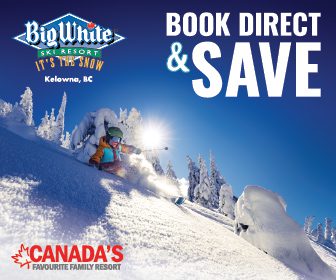With limited lift tickets on offer in 2020 and pandemic restrictions to resort operations, many Australian skiers and snowboarders will be considering their first backcountry experience.
But before you go rushing into a National Park with no safety gear and no idea, remember that backcountry skiing has risks you won’t find in resort and the consequences can be deadly.
To help first timers, we asked Alpine Access Australia founder and backcountry guide, Dave Herring, to give his experienced tips to those who have never been out of the resort boundaries.
How is backcountry skiing different to resort?
The biggest difference would have to be that resort skiers have the choice to ski on groomed runs when the off-piste conditions are bad whereas in the backcountry it is the varying snow conditions that catch people out. From powder snow or corn to sheet ice or breakable crust and everything in-between.
Obviously there is a change in equipment and all the extras that need to be carried for a successful backcountry tour. Each group needs to be independent and well-prepared as there is no ski patrol hovering to help. Good planning and management is all-important.
What level skier/boarder do you need to be?
Because of the varying conditions encountered, at least a strong intermediate skill level and good fitness is required. It is not a high-rotation kind of experience. Touring requires a certain mindset and there are days when not many turns are made despite the effort. Touring in the backcountry is great, getting some turns in is even better!
What would you advise a first timer?
I guess the first thing I would say is not to run out and buy all the gear. Rent first, try things out and find out what works for you and make sure you like it. The backcountry is not for everyone.
Go with a reputable guide or do an intro course. Learn from the experience of others. It is not a place to get caught out.
Things can go upside down very quickly.
Learn where to get all the available information and how to use it to plan your trip and make the right decisions. You cannot plan to go from weeks out, and not be prepared to change those plans if conditions turn out not to be what you expected. Bad decisions can end up impacting on a lot of other people.
How do you know if a guide is qualified?
In Australia there are no regulations as to guiding. Fortunately there are many good options for people and plenty of experience to tap into but it is always a good idea to ask anyone you are putting your faith in about their experience and qualifications.
There is a definitely a changing culture here and plenty of younger well-qualified guides coming through. There is however still the odd cowboy to watch out for. Inexperience soon becomes apparent.
What questions should you ask before heading out?
For years teaching people about snow science and understanding terrain failed to curb incidents in the backcountry. Human factors are now recognised as being the main ingredient in backcountry accidents and rescues.
I would be checking that everyone in the group had the same expectation and mindset regarding the tour and that those taking on leadership roles within the group have the appropriate skillset and attitude to safety, communication and group decision-making that I do.
Particularly if you are heading into avalanche terrain, you and all in your group should have done an avalanche skills course, have a beacon, shovel and probe, and know how to use this gear.
What’s a good intro run in Australia?
There are a few good options for starting in the backcountry without getting too far out or into overly challenging terrain. Again, go with a guide.
In New South Wales heading across the Guthega dam wall to the Guthega Trig is a good entry-level option. Alternatively you could go from Eagles Nest at the top of Thredbo to Signature Hill if the conditions are favourable. Dead Horse Gap is a step up in terms of terrain and navigation but a great intermediate level tour.
In Victoria, Mt Stirling is a great option for backcountry first-timers as they even have a local ski patrol. There are a few options close to Hotham and Falls Creek but more care is needed in the steeper terrain of the Victorian high country, especially around Mt Hotham.
What equipment is essential

Split boarding has taken off for snowboarders, but most start out on snowshoes, carrying their snowboard on their backpack. Either way, 3-piece poles are essential.
Skiers need skis with touring bindings that let you release your heel and skins to give you uphill traction. Starting out you can use your own alpine boots and poles. Ideally as you progress, a dedicated touring boot and adjustable poles will serve you better.
A larger backpack is needed to carry all the gear needed to be independent and safe in the backcountry. First aid kit, emergency shelter, GPS, EPIRB or similar, map and compass, radios, sunglasses, goggles, gloves, beanie, sunscreen, food and water, puffer jacket, head torch, personal meds, avalanche beacon, shovel and probe.
Clothing is important.
Cotton is not advisable as it stays wet and gets cold.
Base layers that wick the moisture away from your body, mid-layers and quality outerwear. You will be shedding layers as you climb and then putting them back on at the summit, so the easier it is to do this, the better.
Best weather and forecasting sites
My go-to for weather information is Bureau of Meteorology and Windy.com and I look at Snow-forecast.com for the freeze level. Resort snow cams also give good information.
Mountain Sports Collective provides backcountry conditions reports and avalanche advisories. They have the only qualified avalanche forecaster working in Australia.
What other advice would you give?
Stay close to the resort or trailhead for a while until you find your feet, and be mindful that even if close to safety, if the weather closes in you need to be able to navigate your way back. The Australian backcountry has a reputation for hazards such as whiteout, extreme wind and widespread ice.
Be prepared for any and all of these conditions. In a life threatening situation of course call 000, there is an emergency app, Emergency Plus, that will help and identify your Latitude and Longitude. If you have a situation that is not life threatening there is an expectation for you to have a self rescue plan.
As you progress, do an AST1 course to ‘know before you go’, and never underestimate the consequences of getting caught out under-prepared. Always lodge a trip intention form with the National Park or local ski patrol and let someone who cares know about your plans.
Check out SnowsBest backcountry content here.
Please help SnowsBest remain your independent source of snow news this winter with a “Covid contribution“, from as little as $1, so we can continue to deliver the news and content you value in a season when we need each other most. Contribute here.































